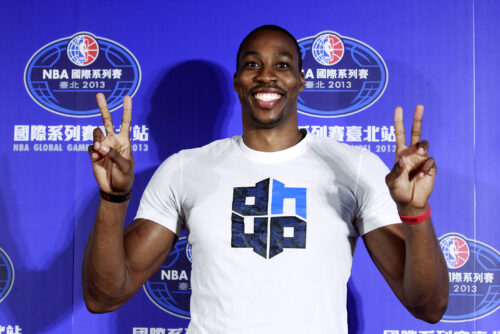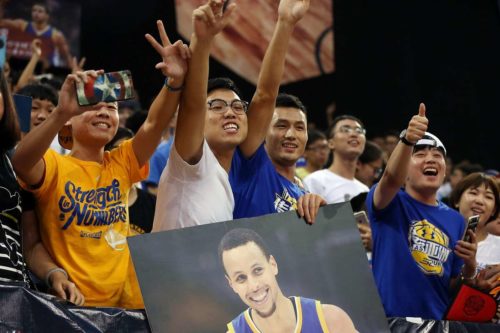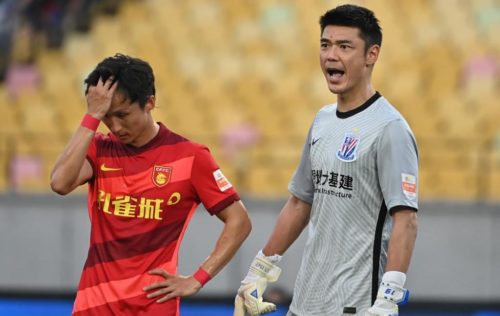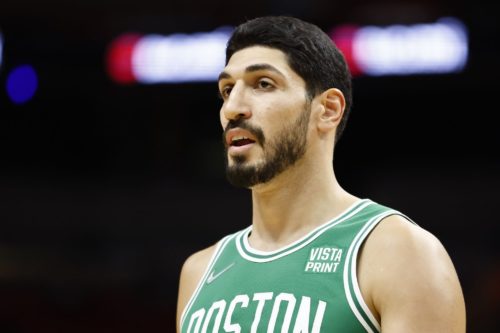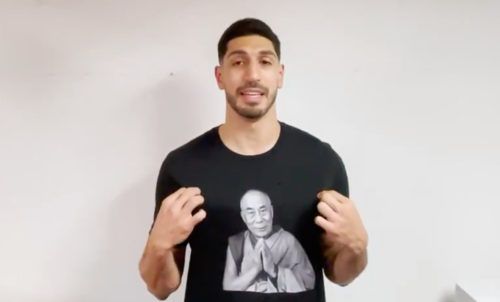The NBA’s operations in China, explained
The NBA is wildly popular in China, with about 800 million Chinese watching games last season, and many basketball players and teams becoming household names. But after a single tweet set off a firestorm last Friday, the future of the NBA in China is in jeopardy. We explain what’s at stake.

Last Friday, October 4, Houston Rockets General Manager Daryl Morey sent a tweet that sent shockwaves across sports, business, and political communities in China and the United States. The tweet, which was an image that proclaimed support for the anti-government protesters in Hong Kong, was quickly deleted, but the damage had already been dealt — and it has been significant for the entire NBA, including lost sponsorships and a suspension of TV broadcasts. Nearly a week later, the league continues to scramble in an attempt to protect its decades-long push into the Chinese market, with commissioner Adam Silver preparing to travel to China.
Meanwhile, on Thursday, the Los Angeles Lakers are supposed to face the Brooklyn Nets in the first of two scheduled preseason games in China that are suddenly in jeopardy. Ahead of all that, here is a brief overview of the NBA’s operations in China.
The beginnings of b-ball in China

Brought to China in the 1890s by Western missionaries, the game of basketball has become, by some measures, the most popular sport in the country, with an estimated 300 million players. Despite the country’s relative isolation from the West throughout much of the 20th century, and even during the Cultural Revolution when Western pastimes were labeled “bourgeois” and discarded, basketball in China persisted.
In the 1990s, as professional sports in the U.S. became increasingly commercialized, teams began to import more foreign players and sought to expand their activities abroad. It was during this time that the NBA turned to China as a key market for the realization of its global ambitions, opening its first office in Hong Kong in 1992. Since then, the league has developed an elaborate structure of business ties with a range of Chinese entities.
The drafting and signing of superstar Yáo Míng 姚明 by the Houston Rockets (休斯顿火箭 xiūsīdùn huǒjiàn) in 2002 represented a watershed moment for the NBA in China. Inducted into the Basketball Hall of Fame in 2016, Shanghai-born Yao was the first Chinese player to enter the elite ranks of the NBA. Throughout his career with the Rockets, which ended unfortunately early due to a foot injury in 2011, Yao captured the hearts of millions of Chinese basketball fans and catapulted the visibility of the NBA to unprecedented heights in China.
According to the NBA, “About 800 million Chinese watched NBA programming on TV, digital media or smartphones last season,” Bloomberg reported.
League-level operations

One of the core components of the league’s operations in China is the issuing of exclusive broadcast rights to various streaming platforms. In 2015, the NBA signed a $500 million deal with Tencent that gave the tech giant permission to stream games and other content across its platforms. That was renewed in July with a five-year, $1.5 billion contract extension ($300 million per year). “The deal has been a slam dunk and is expected to net the NBA more than $800 million,” according to Forbes. Nearly 500 million people watched on Tencent last year, with 21 million people tuning into a single match last year in the NBA finals — as much or more than the average NBA Finals viewership in the U.S.
The NBA’s domestic U.S. TV deals with TNT and ESPN were reportedly worth a total of $24 billion over nine years ($2.7 billion per year).
The NBA’s total revenue last year was $8 billion, according to Forbes.
Meanwhile, Weibo serves as the NBA’s official social media partner for the Chinese market, providing exclusive content to more than 40 million users who follow the league’s account. “NBA franchises gained 47 million new followers on Chinese social media platforms during the 2018-19 season,” according to Reuters.
The NBA Global Games initiative, part of a broader push to increase the sport’s global prominence, has been another central aspect of the league’s operations in China. The first game was held in China in 1979, and NBA teams have been traveling to the country with increasing regularity since the mid-2000s. These much-anticipated events drive domestic enthusiasm and are a critical marketing tool both for individual teams as well as the NBA as a whole.
NBA China, launched in 2008, is currently worth more than $4 billion, according to Forbes.
Team-level operations
As the popularity of the NBA in China has steadily increased, individual basketball teams have attempted to enter the Chinese market directly, rather than depending on league authorities to conduct business on their behalf. One of the main sites for these initiatives has been ecommerce, where the sale of official merchandise to millions of basketball-crazed Chinese consumers has proven highly lucrative. This applies in particular to a small top tier of teams that have experienced immense success in capturing support within China. According to the NBA Red Card 2019, the three most popular teams in the country are the Golden State Warriors, Houston Rockets (pre-Morey tweet scandal), and Los Angeles Lakers.
In August 2019, Alibaba co-founder Joe Tsai (蔡崇信 Cài Chóngxìn) purchased a majority share of the Brooklyn Nets in a move that seemed sure to encourage further cooperation between the league and Chinese firms. Tsai reportedly paid a record $3.3 billion for the Nets and its home, the Barclays Center — more than 10 times the team’s revenue.
According to Forbes, every team in the league is worth at least $1 billion, with the average value being $1.9 billion — up 13 percent over the last year. Despite limited on-court success, the New York Knicks are the league’s most valuable team, at $4 billion, up 11 percent from the previous year. Here’s a complete list of team valuations.
“The average earnings before interest, taxes, depreciation and amortization, or EBITDA, of $61 million per NBA team is double what it was two seasons ago,” according to Forbes.
“Teams still generate at least 90% of their revenue within North America,” according to Forbes, which implies that cutting ties with China would not crater the value of NBA franchises.
Individual player brands
Some players have also found success marketing their own brands within China. Despite retiring in 2016, Kobe Bryant remains the most popular player in the country, perhaps because he has visited China for 16 consecutive years, in addition to a high level of media visibility stemming from commercial partnerships with a range of local companies. Various business ventures pursued by some of the league’s top stars — such as Dwyane Wade’s launching a wine label for the domestic market in 2015 — have become increasingly common as the NBA’s presence within Chinese society solidifies.
Until last Friday, the future of the partnership between the NBA and China appeared to be on a trajectory of rapid growth. However, the incursion of politics now threatens to disrupt this complex network of relationships. Although the full extent of the damage of Morey’s tweet remains to be seen, the NBA still has a great deal to lose in the Chinese market.



